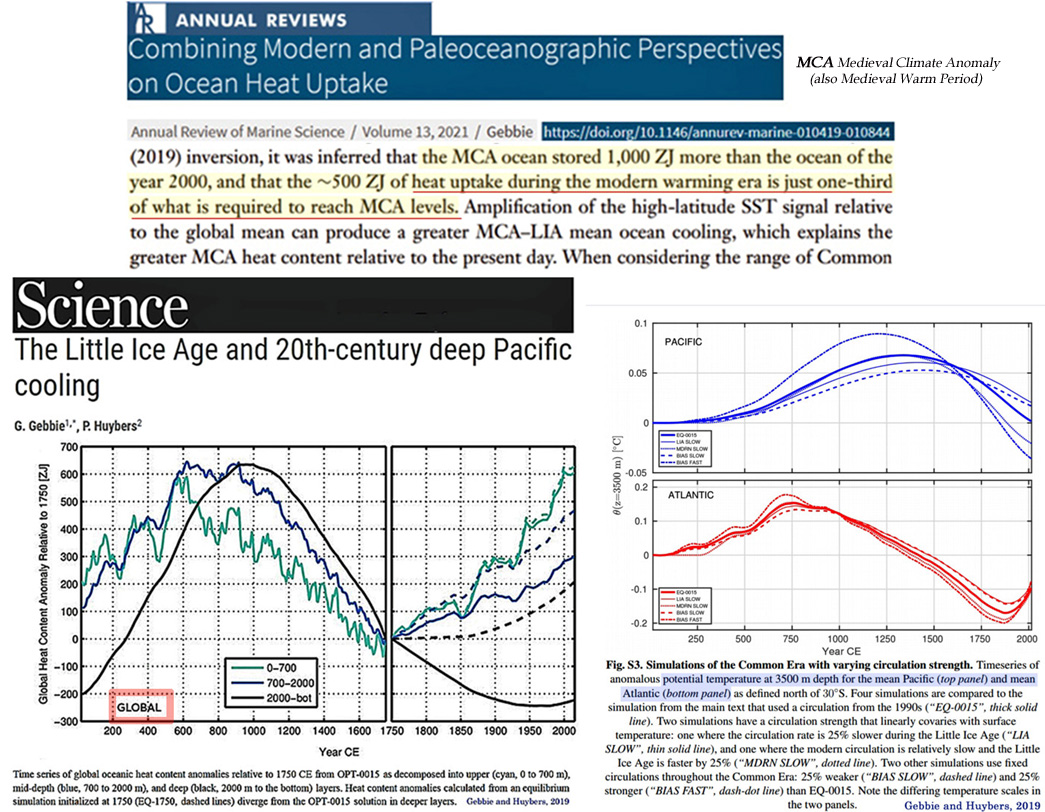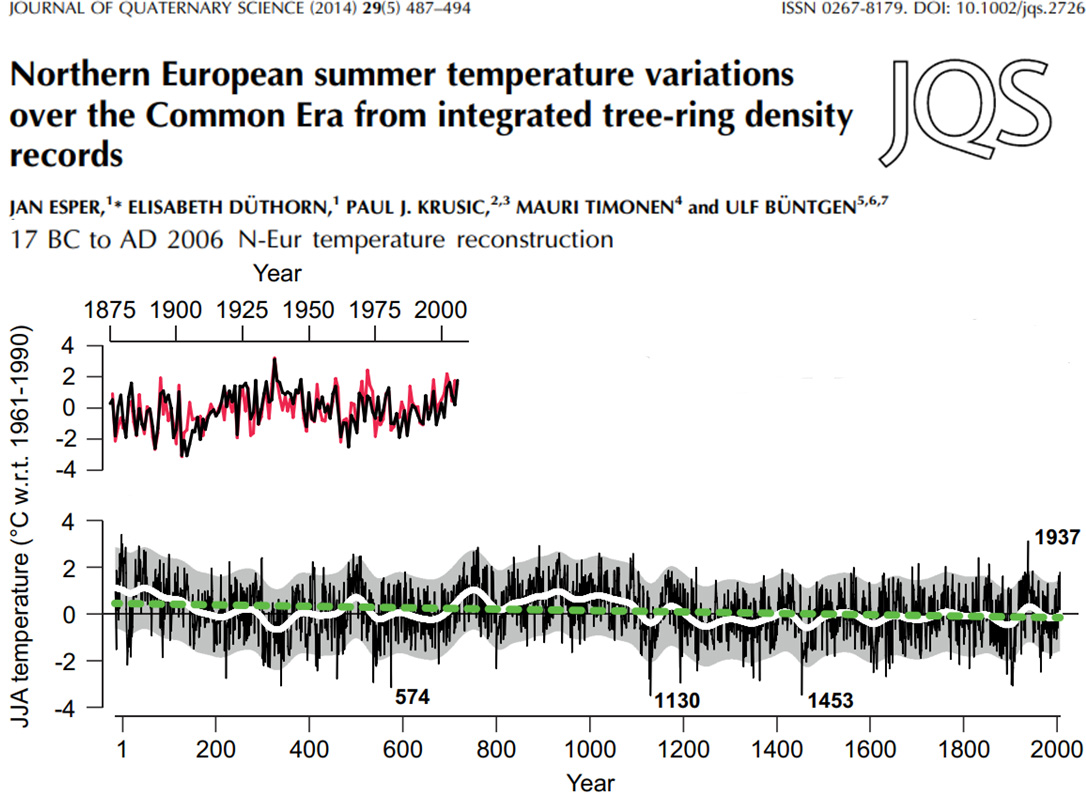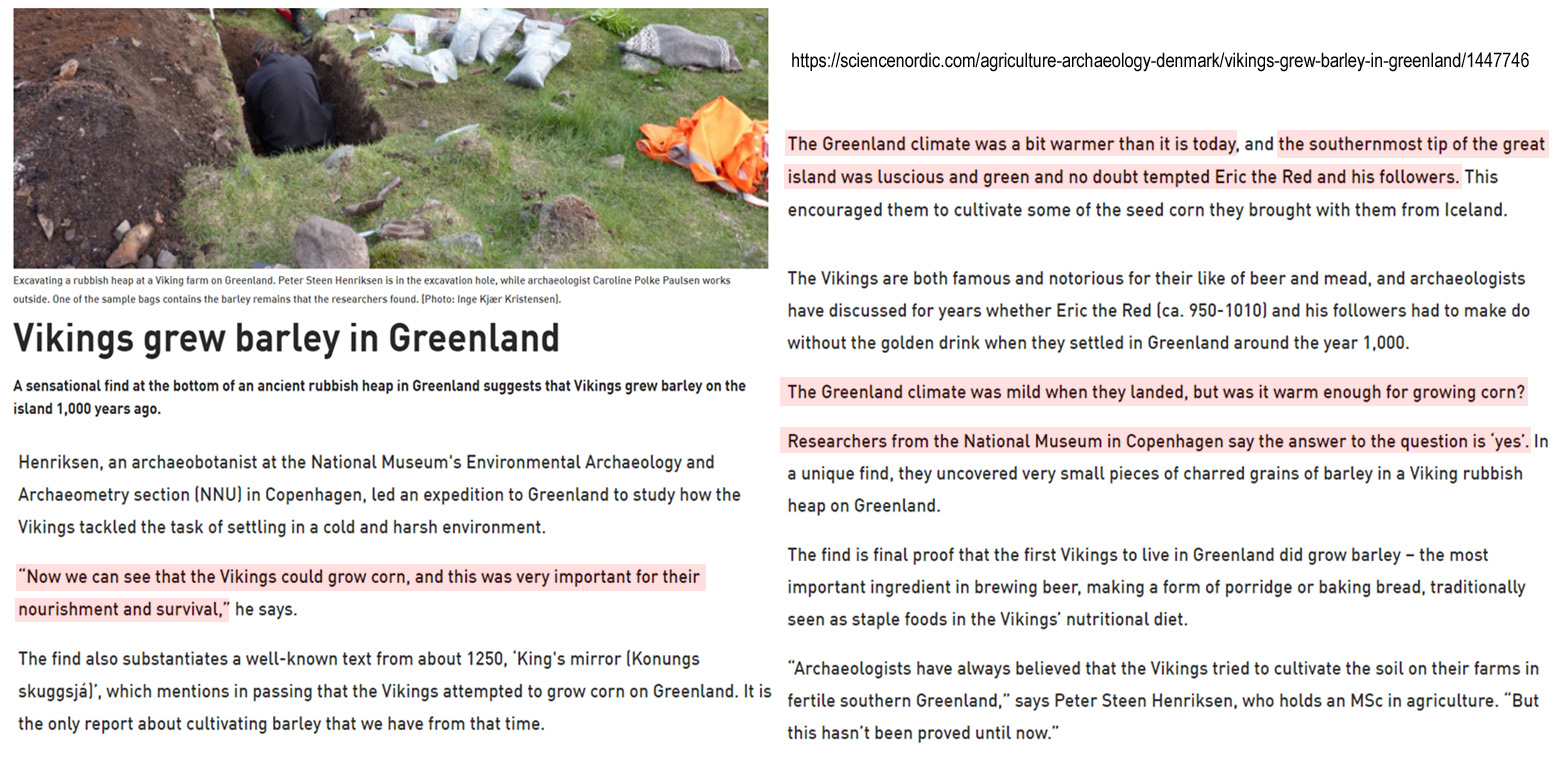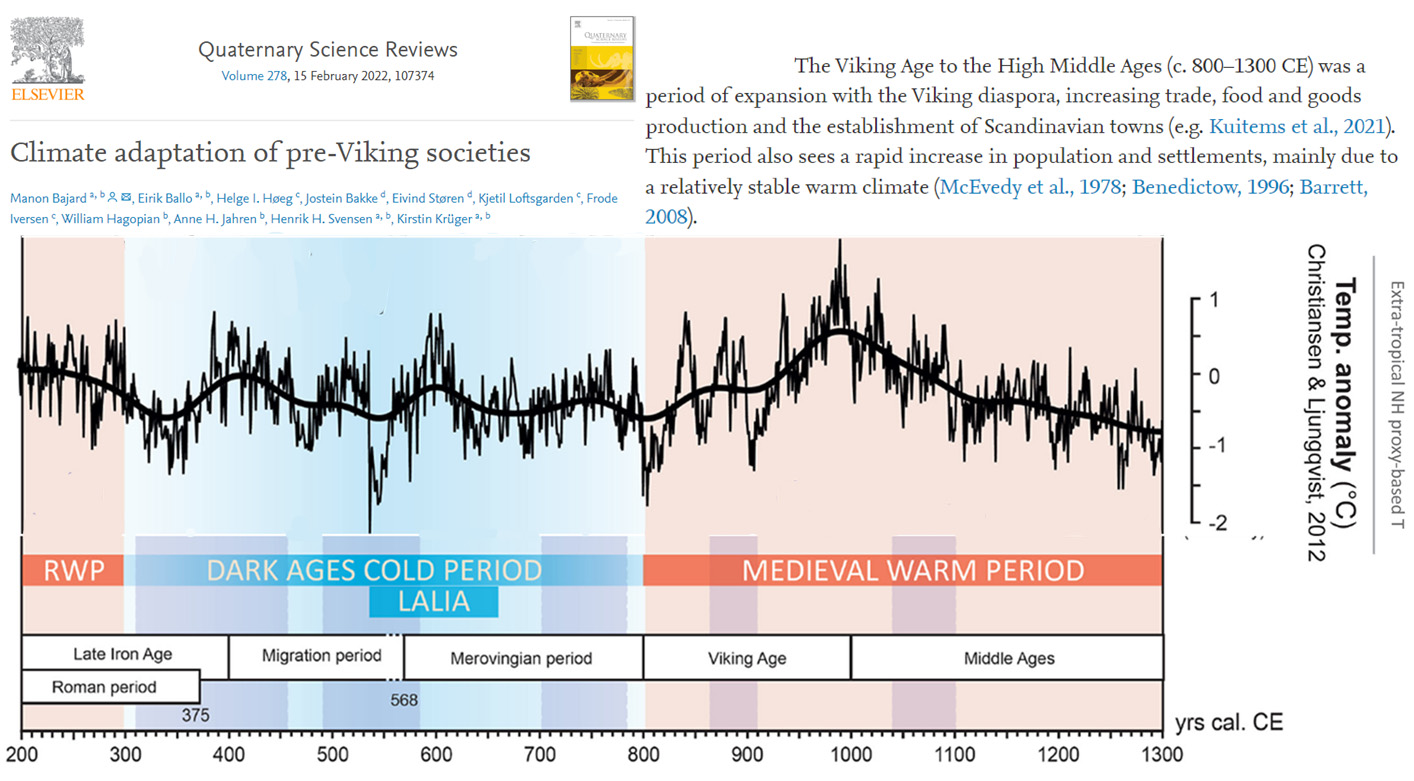Due to a “relatively stable warm climate” the Medieval Warm Period (800 to 1300 CE) was a period of expanding Scandinavian population, increasing trade, food and goods production.
There has been a ~500 zettajoule (ZJ) increase in global ocean heat energy since 1750. The Medieval Warm Period global ocean had 1000 ZJ more heat energy than today’s global ocean. Thus, the post-1750 warming is “just one-third of what is required to reach MCA [Medieval Climate Anomaly] levels” (Gebbie, 2021, Gebbie and Huybers, 2019).

Image Source: Gebbie, 2021, Gebbie and Huybers, 2019
Common Era Scandinavian temperatures have not significantly deviated from the overall long-term trend in the 20th or 21st centuries, as the 1930s were the warmest period in the last few centuries (Esper et al.,2014).
Image Source: Esper et al.,2014
During the Medieval Warm Period Greenland was warm enough for the Vikings to produce corn, a staple food “very important to their nourishment and survival” (ScienceNordic).
Image Source: ScienceNordic
A new study indicates there was a clearly warmer Medieval Warm Period and Viking Age in Scandinavia, as indicated by the production of hemp and flax in Norway and Sweden. Changes in agricultural practices documented the changes in climate. The most productive (food and goods) and flourishing population periods occurred during the periods of greatest warmth.
“The Viking Age started with warmer climate in Scandinavia in c. 800 CE (Fig. 4), which allowed rapid development of agricultural practices. This major change is visible in a large range of taxa (Fig. 3). Pinus reached a minimum around 900 CE and Betula and Alnus also decreased, while Picea and Urtica increased again, suggesting an even larger opening up of the landscape than previously. Large amounts of Cannabis pollen are recorded after 900 CE, indicating that the lake was being used for hemp retting. In the Viking Age and early Middle Ages, hemp was produced in several places in Norway and Sweden (Skoglund et al., 2013; Wieckowska-Lüth et al., 2017). The production of flax is also recorded during the Viking Age. Secale, Triticum and Hordeum/Avena were all cultivated during the warmest period 950–1000 CE and regularly recorded above median between 850 and 1300 CE.”
“The Viking Age to the High Middle Ages (c. 800–1300 CE) was a period of expansion with the Viking diaspora, increasing trade, food and goods production and the establishment of Scandinavian towns (e.g. Kuitems et al., 2021). This period also sees a rapid increase in population and settlements, mainly due to a relatively stable warm climate (McEvedy et al., 1978; Benedictow, 1996; Barrett, 2008).”





Thankyou. Fascinating and interesting to see. I’m glad that you filled in the details of the medieval warm period. This should really be pointed out to the ring elites.
The studies do not prove the warming affected global oceans or the Southern Hemisphere
“There has been a ~500 zettajoule (ZJ) increase
in global ocean heat energy since 1750.”
No one could possibly know that
Esper et al shows the late 700’s as the warmest part of the MWP, Greenland was the coldest for 3450 years then according to GISP2. That’s down to positive North Atlantic Oscillation conditions.